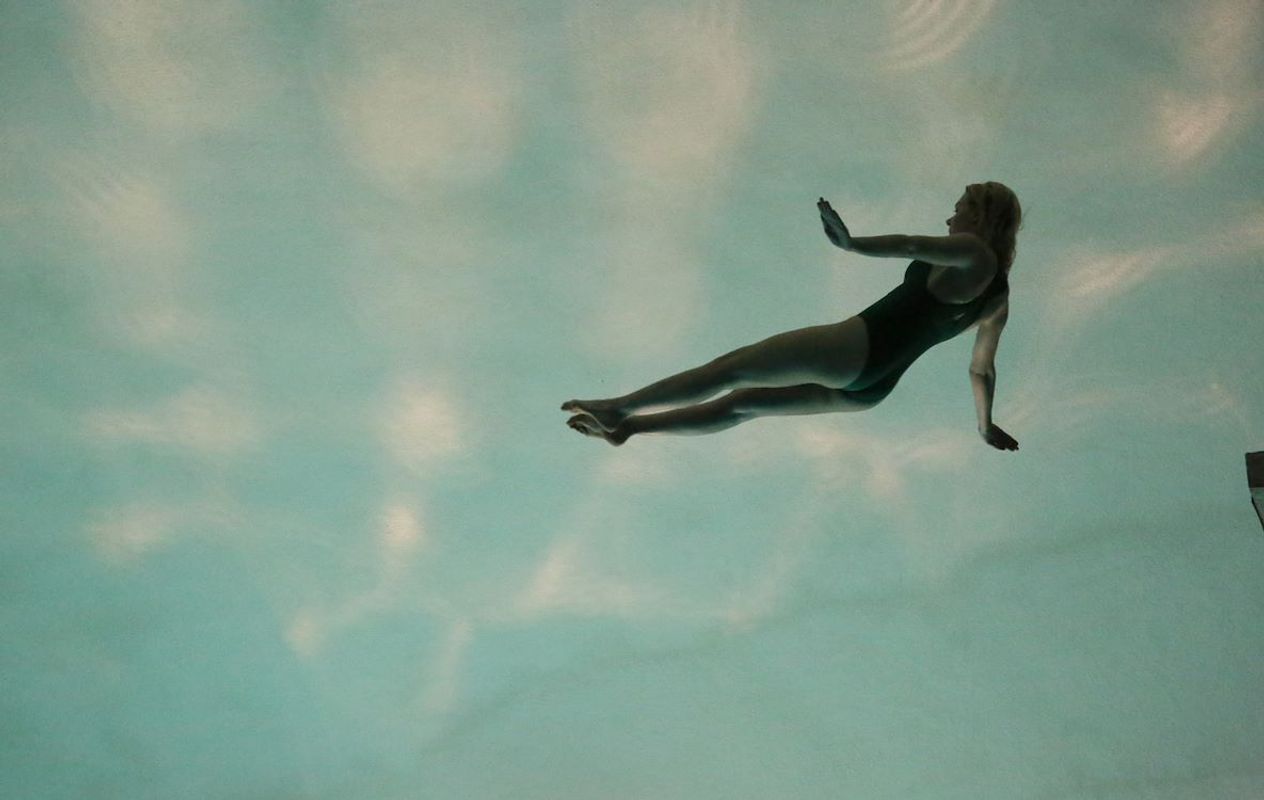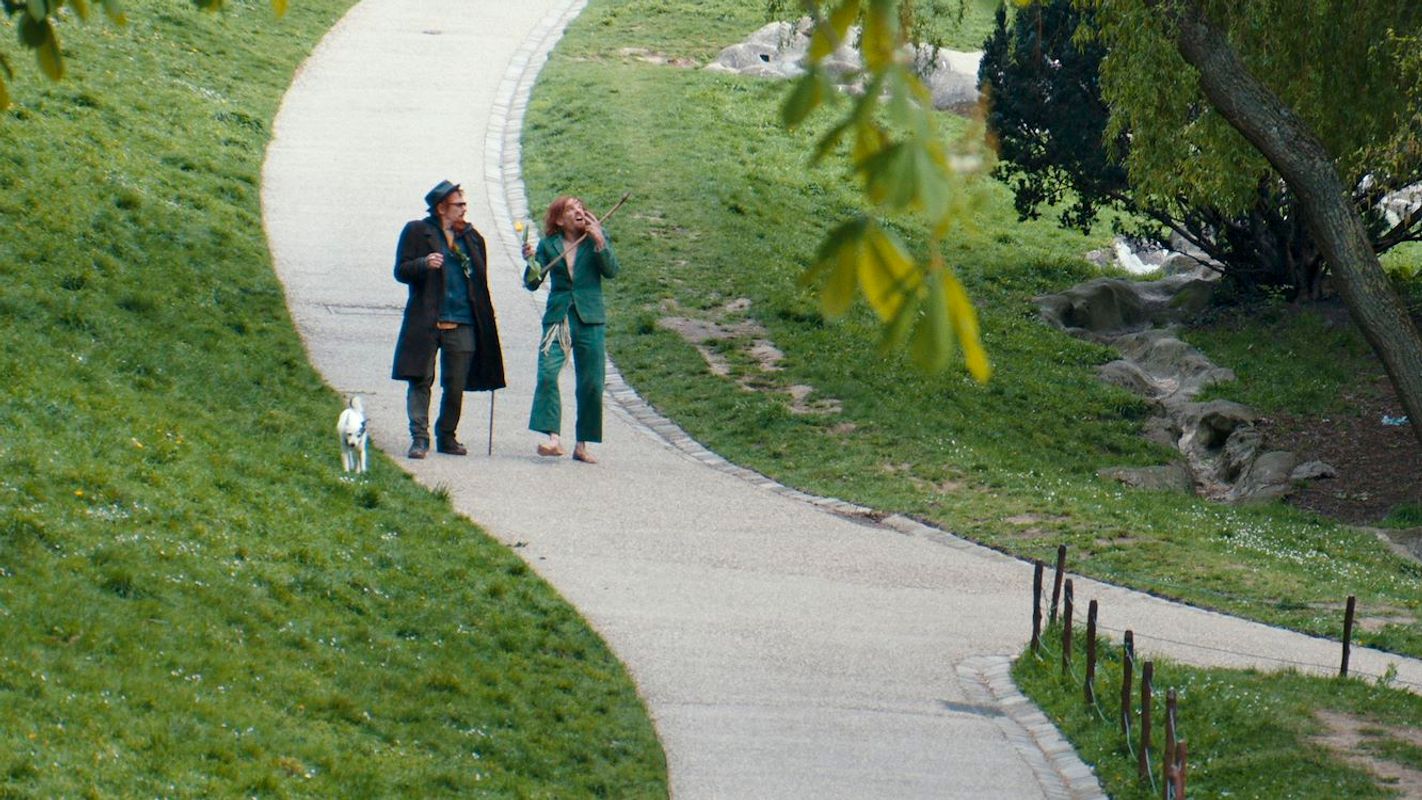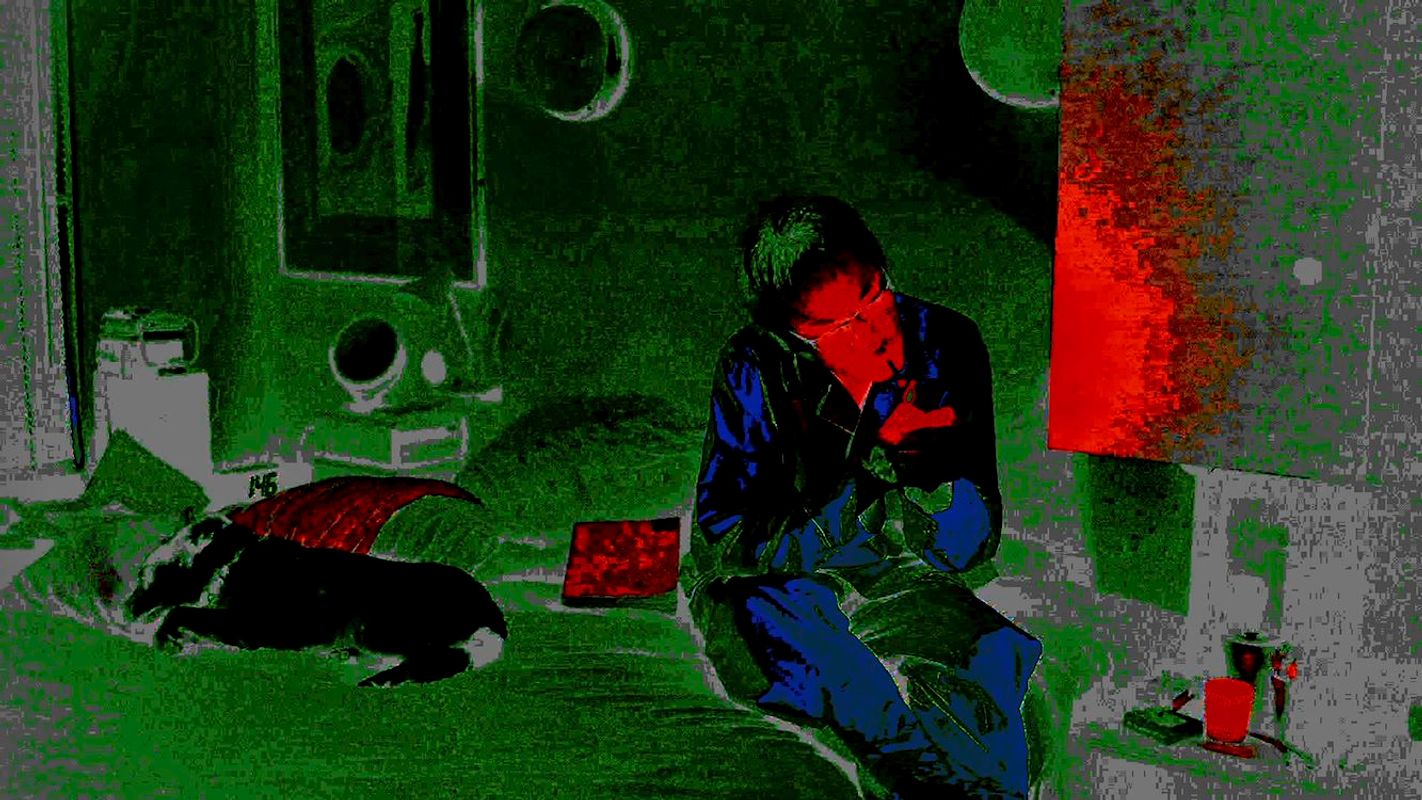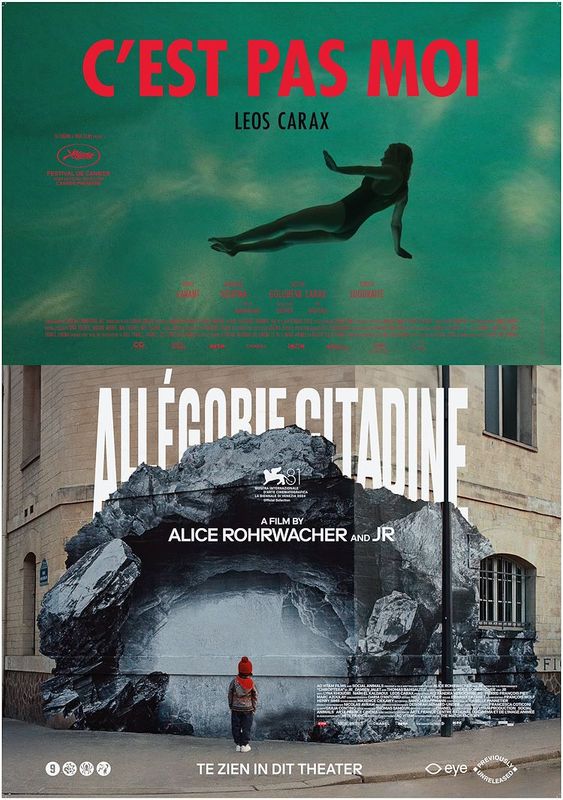C’est pas moi
The Centre Pompidou asked filmmaker Leos Carax to answer the question “Where are you, Leos Carax?”—using only images. The director of Pola X (1999), Holy Motors (2012), and Annette (2021) responded with a freestyle self-portrait, full of playful nods and references to his extravagant body of work. At the same time, it is a heartfelt tribute to Jean-Luc Godard and David Bowie, and an inquiry into the power and politics of image-making.
This deeply personal film traverses Carax’s 40-year career, with recurring appearances by iconic Carax characters such as Monsieur Merde (played by Denis Lavant) and Annette, the mysterious puppet from his eponymous film. Bursting with text and film fragments, this collage is Carax at his finest: provocative, poetic, and philosophical.
Allégorie citadine
In the Allegory of the Cave, Plato wonders what would happen if one of the prisoners managed to break free and escape the cave. But what if that prisoner were Jay, a seven-year-old boy?
A dancer brings her young son to an audition for a stage production based on Plato’s allegory. But as the audition begins, he slips away—into the streets of Paris, chasing adventure.
After their short film Omelia contadina, Alice Rohrwacher (La Chimera) and photographer JR reunite for this imaginative fusion of film and philosophy, with a notable role for Leos Carax. Allégorie citadine explores how images—whether shadows or tangible forms—can distort or reveal the truth.
This urban fairytale builds on JR’s Retour à la Caverne and Chiroptera projects, incorporating footage of these monumental public art installations in Paris. In Retour à la Caverne, JR transformed the façade of the Palais Garnier into a black-and-white trompe-l’oeil cave. In the second part, Chiroptera, hundreds of handprints were embroidered onto the cave walls by a collective of people.









